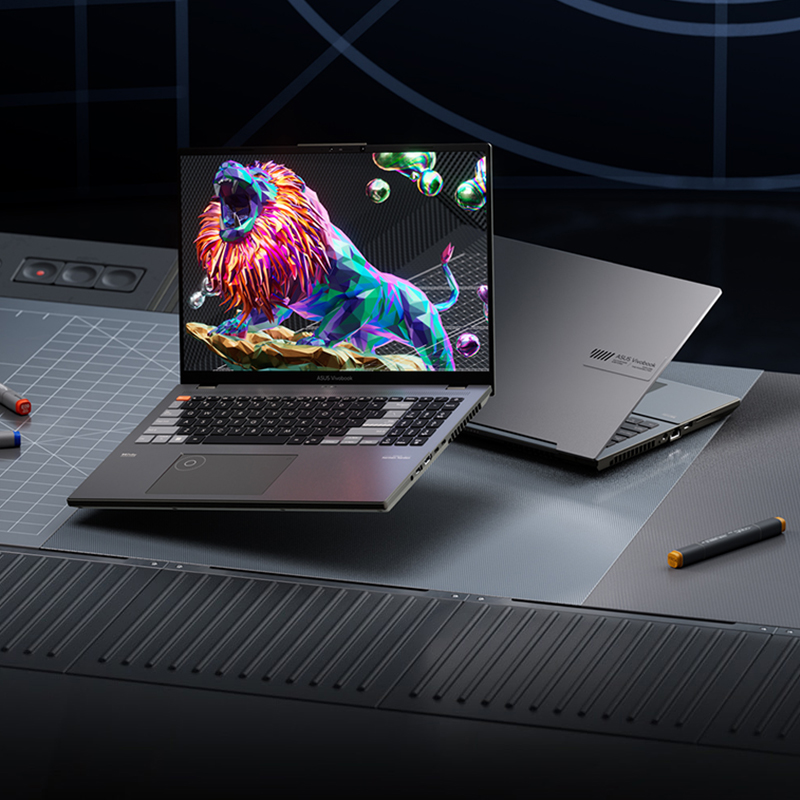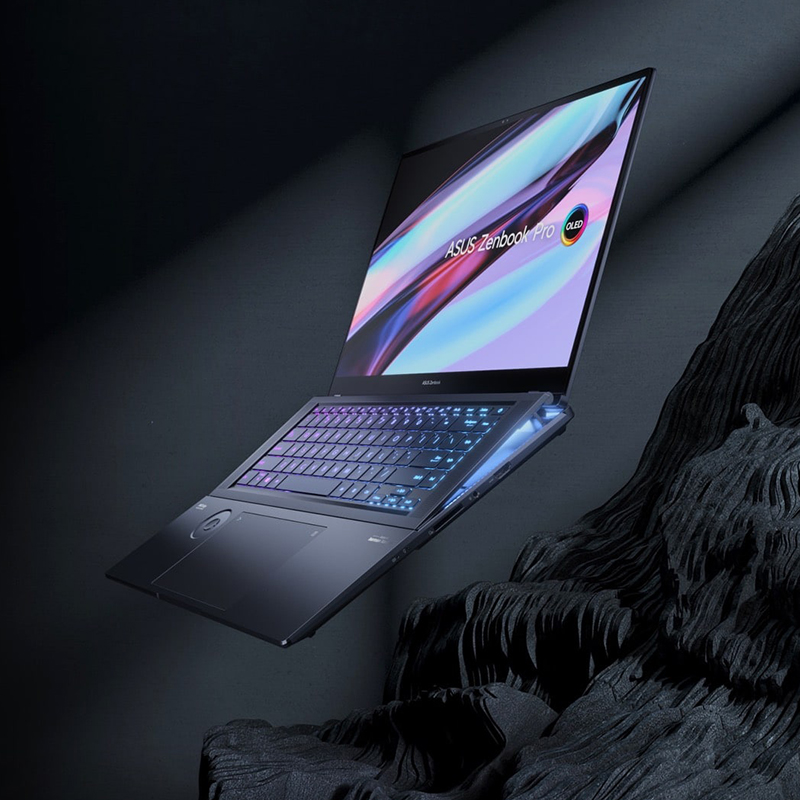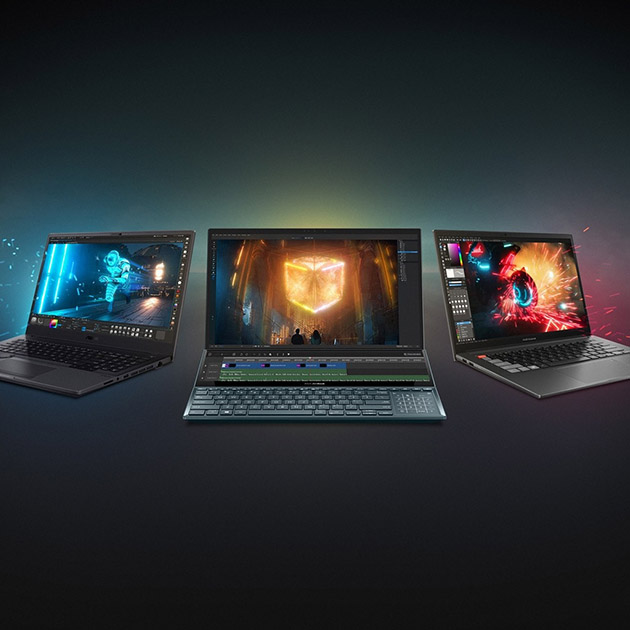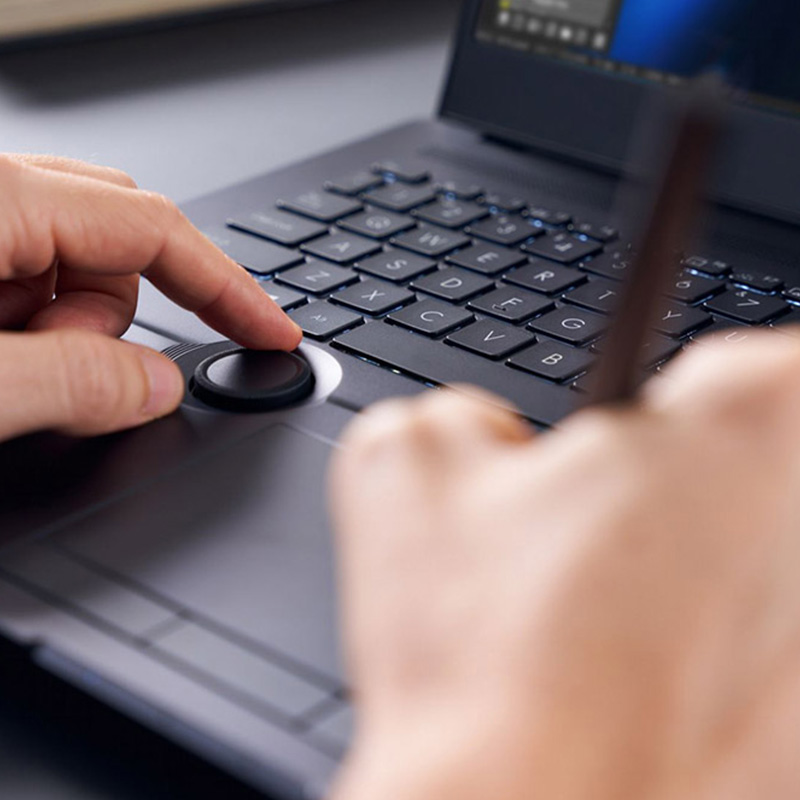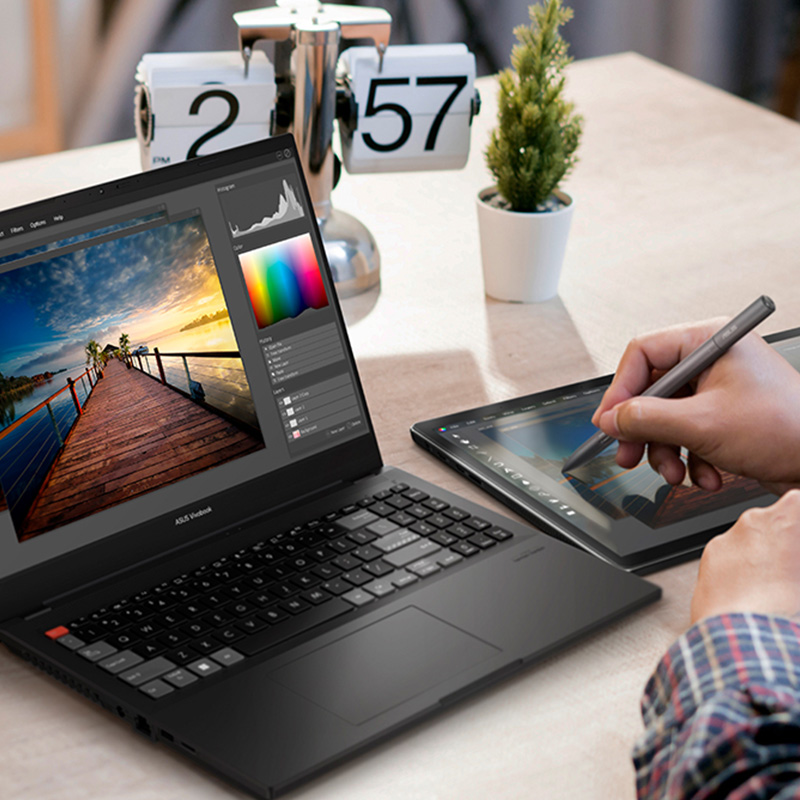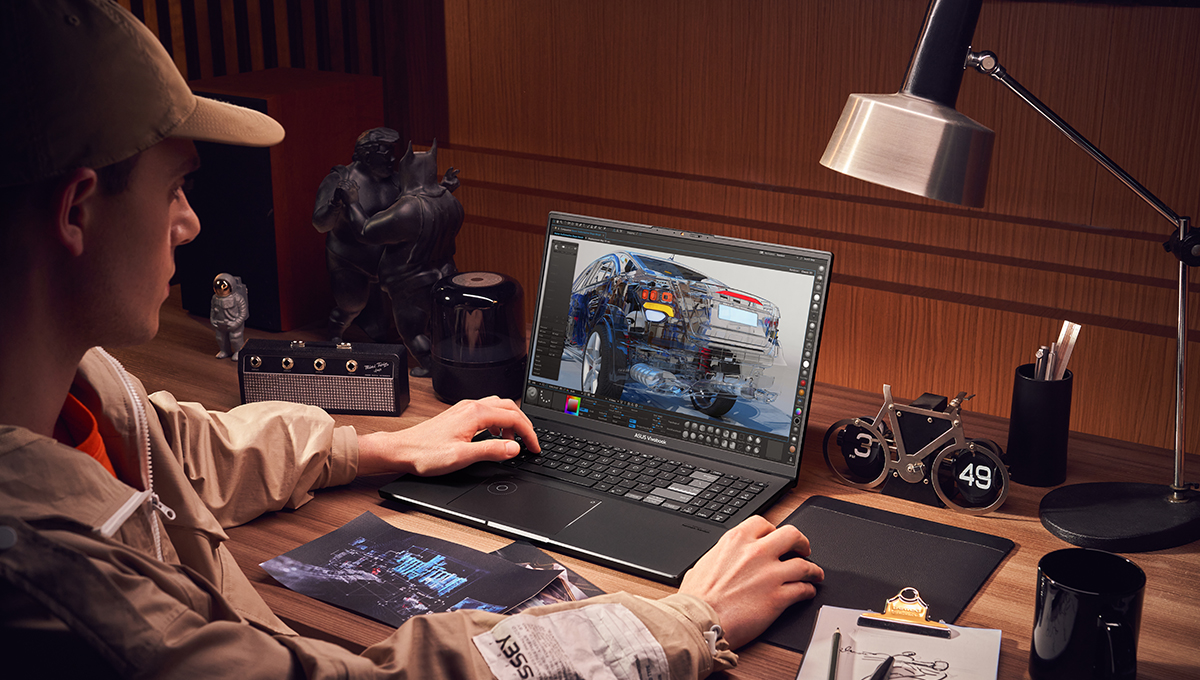
Jul 13, 2023
If you are a graphic designer, you probably already understand how
challenging it can be to choose a laptop that will comfortably
handle all the work you throw at it. And it can be even more
challenging finding one that is thin and light and looks great while
meeting your performance requirements.
There are many laptops available on the market at any given time, at
various price points and with varying specs and features. So, what
is the right combination? Here is a list of 10 things you should pay
attention to while choosing your next device, along with
recommendations.
Display
As someone who works with visual arts, the display on a laptop is
something you should pay a lot of attention to.
The first thing to consider is the size and aspect ratio. Displays
that are 15 or 16 inches usually prove to be the sweet spot between
portability and adequate working space. A display with a 16:10 ratio
could be a good idea, as it gives you more vertical space.
A very important aspect of a display for graphic design is color
accuracy. For digital art, pay attention to RGB color gamut
coverage. 100% sRGB coverage is great; 100% DCI-P3 is even better.
You'll also want a display with as little color variance as
possible, measured as Delta E. You should try to keep that number
below 2. If the display is validated by Pantone®, that’s also a
massive plus.
Finally, pay attention to the display technology used. OLED is
emerging as a superior choice for creatives. It's not only more
color accurate and has deeper blacks than its LCD counterparts, but
it's also brighter (aim for no less than 400 nits) and can help
battle eye strain by cutting up to 70% of blue light emissions. Opt
for the glossy variant (more commonly used in OLED) over matte for
superior color vibrancy and accuracy.
CPU
The CPU, also known as the processor, will determine how well your
laptop will be able to process tasks. For graphic design, you don’t
need the top-of-the-line, but a quite powerful CPU will benefit you
greatly.
Pay attention to the number of cores, as it will determine how many
instructions your CPU can handle simultaneously. Aim for no fewer
than eight cores. If the CPU has multithreading capability, that's
also a massive plus. Aim for no fewer than 12 threads.
Clock speed is another important spec. It determines how fast the
CPU can handle the tasks you throw at it. Aim for at least 4.0 GHz
clock speed in Boost mode.
The two main CPU manufacturers — Intel® and AMD —tier their products
by assigning a number to each model. For best performance, aim for
the latest-generation (currently 13th Gen for Intel, 7000 series for
AMD) CPU. Opt for Intel Core™ i5 or AMD Ryzen™ 5 if you're on a
budget, and Intel® Core i7 or AMD Ryzen 7 if you have more money to
spend.
H-series or HX-series for Intel and HX for AMD indicate
high-performance, so if you notice a CPU model name ending with
these letters, that’s a great choice.
GPU
The GPU is a very important component for those working with
graphics. Also known as the graphics card, this component handles
the visual processes you task your laptop with. For a graphic
designer, this may determine how smoothly you can move elements of
your vector art in a creative app like Adobe® Illustrator.
Opt for a discrete GPU (separate from the CPU). As opposed to
integrated variants, discrete GPUs feature VRAM (aka, Video Random
Access Memory), which is very important for graphics-heavy tasks.
Aim for laptops with discrete graphics with at least 4 GB of memory.
Most creators opt for NVIDIA® GeForce RTX™ laptop GPUs. For graphic
design, the latest-generation NVIDIA® GeForce RTX™ 4050 should be
alright, but if you can NVIDIA GeForce RTX™ 4060.
RAM
RAM stands for Random Access Memory. This spec determines how many
files you can store and access immediately, or, in other words, how
many apps your laptop can handle at once without freezing.
Adobe®, the company behind the world’s leading design app — Adobe
Illustrator — recommends 16 GB of RAM to operate the software
smoothly. That amount of RAM should provide you with enough memory
to have a couple of apps open at the same time without your laptop
freezing or crashing. It’s also great if the laptop has available
SO-DIMM slots to allow users to add on more memory if needed,
without swapping the device for a whole new one.
Storage
A laptop’s drive is where your files are stored. Because design
files can be pretty large, you should have a laptop with enough
storage space that you don’t need to rely on an external hard drive.
Aim for an SSD with at least 1TB of space to ensure convenient
usage. And similarly as with RAM, it’s a big plus if the device has
available slots that would make the storage upgradeable.
Form Factor
Your work habits may influence which form factor is best for you.
Traditional clamshell laptops work well for most designers, since
many of them usually use a mouse and keyboard while working.
If you prefer to use a stylus, a convertible laptop with a 360°
hinge can be a great choice, as you can lay the device flat and use
it like a tablet. An alternative could be a laptop with a detachable
keyboard.
Portability and Durability
It might be a good idea to consider a thin and light laptop due to
its portability. If you commute with your laptop frequently or work
on the go a lot, you will appreciate one that weighs no more than 2
kg.
Another important aspect of a laptop is its durability. Some laptops
are tested to the strictest US military standards. Getting one that
has been torture-tested can be a good idea, to ensure it serves you
for longer, especially if you carry it around frequently.
I/O Ports and Wireless Connectivity
Graphic designers, like many other content creators, often need to
connect a lot of peripherals and accessories. These can include an
external monitor, keyboard, mouse, pen tablet, hard drive,
headphones, memory cards, and others. Ensuring sufficient
connectivity is paramount for convenience of use.
Your laptop should have two Thunderbolt™ 4 ports with power delivery
and display support. This is the latest connectivity method that
proves superior to many other options. However, as many accessories
and peripherals still use other connections, it's good to have at
least two USB Type-A ports, an HDMI port, and an audio jack. It’s a
massive plus if your laptop also has an SD card slot.
For wireless connectivity, look for the newest, fastest
technologies. WiFi 6E will ensure fast downloads and uploads. Also,
look for Bluetooth® 5 to ensure seamless wireless connections with
other devices and accessories.
Touchpad and Keyboard
Like many other graphic designers, you probably work on the go quite
a bit. That doesn't mean you need to compromise on the convenience
and comfort of using your laptop.
To ensure great comfort of usage without peripherals, look for a
laptop that has a full-sized keyboard with dished caps and plenty of
key travel, as well as a large, accurate touchpad.
Additional Functionalities
Many clamshell creator laptops accommodate graphic designers' needs
by featuring a touchscreen or supporting stylus input on the
touchpad for optimal creative input.
Some laptops go a step further and provide creator-specific input
devices that help streamline workflows, making working in creative
apps a breeze. One such feature is the ASUS Dial and DialPad. The
former is a physical dial and the latter is a virtual rotary input
feature that can help you quickly and intuitively adjust many
settings, such as brush size, opacity, or zoom.
Another aspect of a laptop build that can help ensure a good
ownership experience over the long term is the modular design.
Modular laptops allow you to swap out a single component when
needed, as opposed to having to buy a whole new device.
Our Pick: ASUS Vivobook Pro 16X OLED (K6604)
ASUS Vivobook Pro 16X OLED
strikes the perfect balance between power, portability, and price.
Equipped with the latest-generations CPU and GPU, you can choose a
spec configuration that suits you best from the many available
options.
This 16-inch laptop, designed specifically for content creators,
comes with a stunning 3.2K 120 Hz OLED display that has been
Pantone® Validated for color accuracy. It covers 100% of the DPI-P3
color gamut. Bright and fast, it comes with a 16:10 aspect ratio for
added vertical working space.
This laptop is comfortable to use, regardless of location. It comes
with a large touchpad, a full-sized keyboard with dished caps and
plenty of key travel, and a unique input method designed for the
needs of creators — the ASUS DialPad. This virtual rotary input
device is ‘baked into’ the touchpad and can be customized according
to your specific needs, habits, and workflows.
Last but not least, the Vivobook Pro 16X OLED comes with a full
lineup of I/O ports, including two snappy Thunderbolt™ 4 ports, two
USB 3.2 Gen 1 Type-A, an HDMI slot, an audio combo jack, an Ethernet
connector, and a standard SD card reader. For wireless connections,
you can count on fast transfers thanks to the latest-generation WiFi
6E and Bluetooth® 5.
For a lower-priced option, we recommend checking out the
ASUS Vivobook Pro 15 OLED (K6502)
— a thin and light 15-inch creator laptop that’s also equipped with
powerful components.
If you are looking for a laptop capable of comfortably handling 3D
design or video editing as well as graphic design, take a look at
the ultimate powerhouses such as the
ASUS Zenbook Pro 16X OLED (UX7602)
or the latest
ProArt Studiobook 16 3D OLED (H7604).
Discover ASUS Creator Laptops






